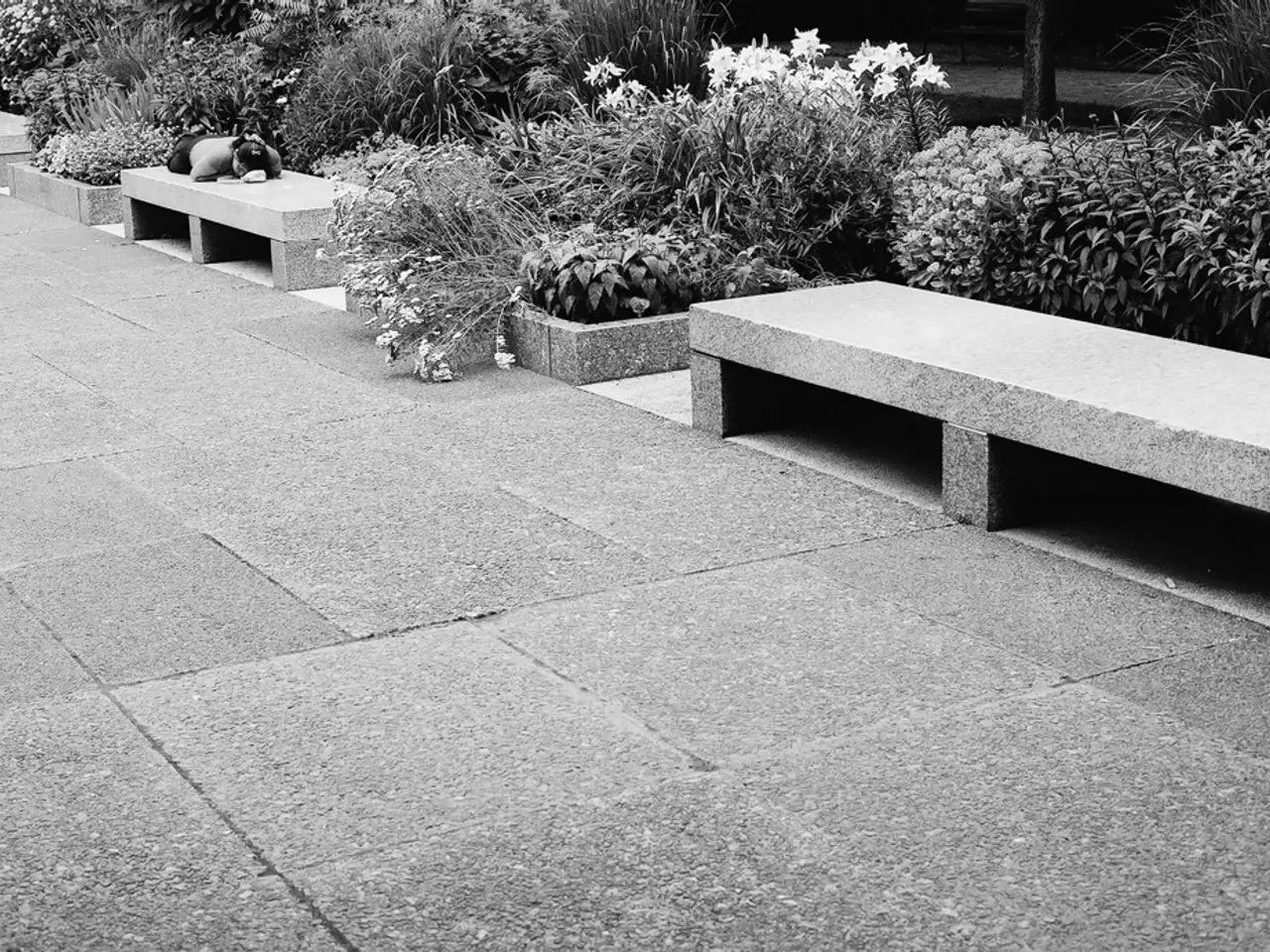Comparing the Benefits of Elevated Planting Structures: Raised Beds versus Containers
In the realm of gardening, two popular methods have emerged as favourable choices for both beginners and experienced green thumbs: raised garden beds and container gardens. Each offers unique advantages, making them suitable for different growing conditions and spaces.
A raised garden bed is a large, framed, bottomless container set directly on the ground, where soil is contained and raised above the surrounding terrain. On the other hand, a container garden uses actual pots or containers placed above the ground, often portable and smaller than raised beds.
Key differences between these two methods are evident in their structure, soil, size, mobility, accessibility, and suitable plants. Raised beds, being larger and usually rectangular frames set on soil, provide a larger growing area but are fixed in place. In contrast, container gardens offer more flexibility, as they are portable and can be moved for sun or shade.
When it comes to soil, raised beds can be filled with garden soil, allowing for tailoring to specific plant needs. Container gardens, however, use soil or potting mix within the containers. Raised beds offer a more extensive growing space but are confined, while container gardens offer smaller growing spaces, making them more suitable for patios or balconies.
Raised beds are ideal when you want to improve poor or compacted soil, reduce weed issues, and create a more accessible garden space with defined pathways. They provide vertical growth space and are good for vegetables like carrots, onions, beets but less suitable for very large or sprawling plants like corn or rhubarb that require more room and height.
Container gardens work best for small spaces like patios, balconies, or where soil drainage is poor. They allow flexibility to move plants for optimal light and temperature. They are well suited for herbs, small vegetables, and flowers but generally have less room for root depth than raised beds.
In summary, raised beds form permanent, large growing areas elevated from the ground, perfect for expanding into garden plots with improved soil. Containers are more flexible, smaller, and portable, tailored for limited spaces or supplemental planting. Choose raised beds when soil quality and space allow, and containers for mobility, space limitations, or decorative gardening.
References:
[1] Raised beds grow vertically with pathways, good for carrots, onions, beets. [2] Plants like corn and rhubarb are less suited for raised beds due to size. [3] Raised beds fixed on ground, containers are portable; raised beds ideal for soil improvement, containers ideal for small spaces. [4] If the soil in a raised bed is loose with no earthworms but has vermiculite or perlite, it might be a raised bed filled with a good container mix.
- In colder climates, a greenhouse can be a valuable addition to a home-and-garden lifestyle, allowing for the cultivation of plants such as tomatoes and peppers that may struggle to survive in cold soil.
- To encourage a no-till lifestyle in raised beds, it's beneficial to incorporate compost into the soil regularly to maintain its richness and fertility, reducing the need for manual tilling.
- For gardening enthusiasts seeking to make the most of their lifestyle, integrating both raised beds and container gardens into their garden can offer a variety of growing opportunities across diverse spaces and conditions.
- Despite their permanence, raised beds can still be easily adapted to suit specific plant needs by amending the soil with organic matter or adding amendments like vermiculite or perlite.
- Home-and-garden stores offer a myriad of options when it comes to raised beds, allowing for customization based on one's preferred size, color, and material, from wood to metal or plastic.




